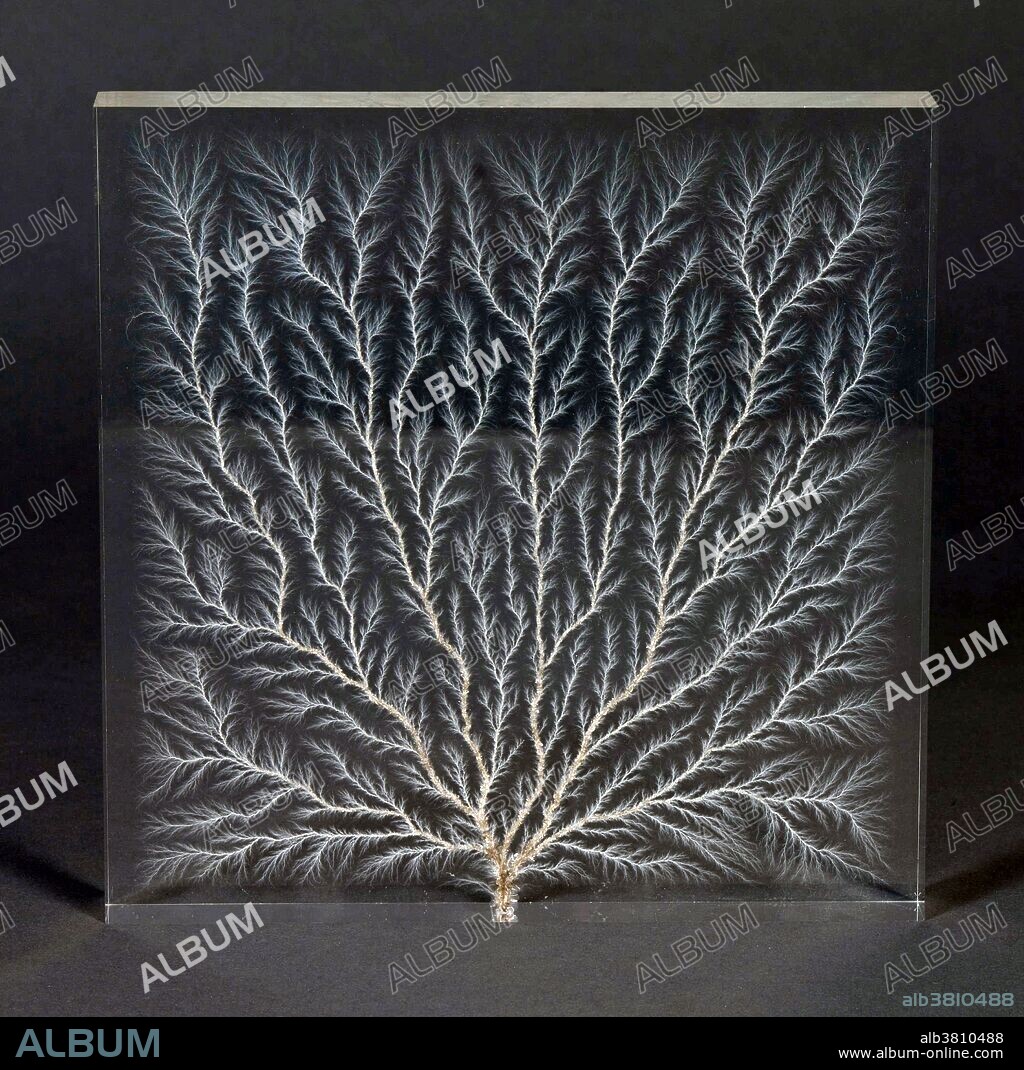alb3810488
Lichtenberg Figure, Electron Tree

|
Add to another lightbox |
|
Add to another lightbox |



Title:
Lichtenberg Figure, Electron Tree
Caption:
This Electron Tree was a gift to the National Institute of Standards and Technology (NIST) from the UK's National Physical Laboratory (NPL) in celebration of NIST's centennial in 2001. An Electron Tree, also known as a "Lichtenberg Figure", is a small Perspex block which has been internally fractured by electrons escaping through a tiny break in the Perspex's base. The pattern the electrons make in the Perspex as they rush out of the block looks like a tree, or fern-like structure. The tree was made at NPL using an Electron Linear Accelerator (Linac), which delivers beams of electrons to a precise fixed point. Linacs are commonly used in treatments to kill cancerous cells in the human body, where accuracy of the beam is critical to ensure that the cancerous cells are uniformly hit during the treatment and do not damage the healthy surrounding cells.
Credit:
Album / NIST/Science Source
Releases:
Model: No - Property: No
Rights questions?
Rights questions?
Image size:
3600 x 3575 px | 36.8 MB
Print size:
30.5 x 30.3 cm | 12.0 x 11.9 in (300 dpi)
Keywords:
2001 • 21ST CENTURY • 21ST • 21TH CENTURY • CENTENNIAL • CURRENT • CURRENTS • ELECTRIC CHARGE • ELECTRIC CURRENT • ELECTRIC DISCHARGE • ELECTRICAL CHARGE • ELECTRICAL CURRENT • ELECTRICAL DISCHARGE • ELECTRON FLOW • ELECTRON LINEAR ACCELERATOR • ELECTRON TREE • ELECTRON • HISTORIC • HISTORICAL • HISTORY • LICHTENBERG DUST FIGURE • LICHTENBERG FIGURE • NATIONAL INSTITUTE OF STANDARDS AND TECHNOLOGY • NIST • PERSPEX BLOCK • SCIENCE • VOLTAGE • VOLTS
 Pinterest
Pinterest Twitter
Twitter Facebook
Facebook Copy link
Copy link Email
Email

